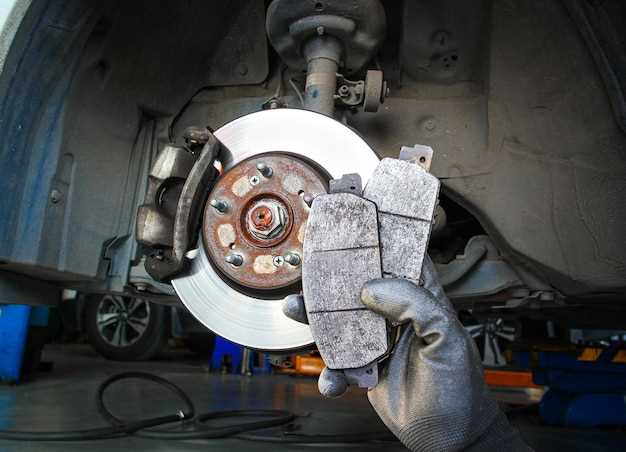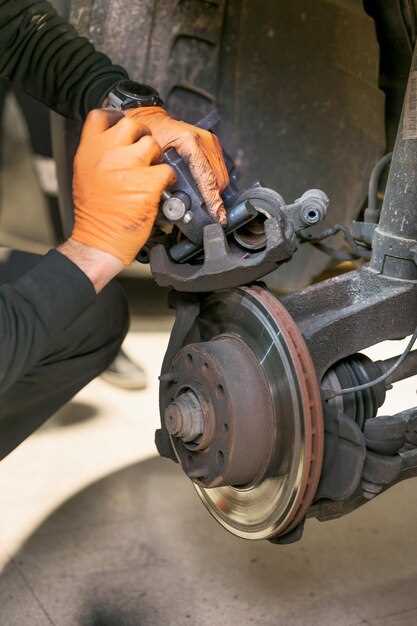
Upgrading your vehicle’s braking system can be a big decision, especially when it comes to selecting the right brake kit. The performance of your brakes is crucial for both safety and driving experience, and choosing the best upgrade can significantly enhance these aspects. Whether you’re looking to improve stopping power for daily driving, off-roading, or spirited track sessions, understanding the types of brake kits available is essential.
There are different options available in the market, ranging from basic replacements to high-performance brake kits designed for serious enthusiasts. A properly selected kit can not only improve your vehicle’s braking efficiency but can also contribute to overall handling and stability. It’s important to consider factors such as the specific driving conditions you’ll encounter, your vehicle type, and your performance goals when choosing a brake kit.
In this guide, we’ll delve into the critical aspects of selecting the right brake kit for your needs. We’ll cover the components of a complete kit, the importance of materials used, and how to ensure compatibility with your vehicle. By the end, you’ll be equipped with the knowledge to make an informed decision and enhance your vehicle’s braking capabilities with confidence.
Understanding the Benefits of Upgrading to a Big Brake Kit

Upgrading to a big brake kit offers significant advantages for both everyday driving and racing enthusiasts. One of the primary benefits is enhanced stopping power. Big brake kits typically feature larger rotors and calipers, which increase the surface area for heat dissipation and improve the overall braking performance. This results in shorter stopping distances, especially under heavy braking conditions often experienced in racing.
Another key advantage is better heat management. During intense driving or racing, brakes can overheat, leading to brake fade, which diminishes performance. A big brake kit is designed to handle elevated temperatures, maintaining optimal performance and reliability even in demanding situations. This enhanced thermal stability not only improves safety but also contributes to consistent performance over prolonged use.
Improved pedal feel is also a notable benefit of a big brake kit upgrade. Many performance brake kits offer a firmer and more responsive pedal feel, allowing for better modulation and control. This is crucial for racers who need precise adjustments in braking force, ensuring optimal handling and cornering stability.
Lastly, a big brake kit can enhance the aesthetic appeal of your vehicle. A visually striking brake kit can complement performance enhancements, giving your car a more aggressive stance. Ultimately, upgrading to a big brake kit not only boosts performance and safety but can also add a personal touch to your vehicle’s overall look.
Key Features to Look for in Performance Brake Kits
When selecting a performance brake kit, several critical features should be prioritized to ensure optimal performance and safety during racing or high-speed driving. One of the foremost aspects is the type of brake pads included in the kit. Performance brake pads are designed for improved friction and heat resistance, providing better stopping power under demanding conditions.
Additionally, the composition and design of rotor materials play a crucial role. Look for rotors made from high-carbon or composite materials, which enhance durability and reduce brake fade. Slotted or drilled rotors can also improve cooling and expel debris, thus maintaining consistent performance during extended use.
Another important feature is the caliper design. Upgraded calipers typically feature larger pistons for increased clamping force, which results in quicker and more responsive braking. Multiple pistons can enhance the distribution of pressure across the brake pad surface, leading to improved contact and efficiency.
Compatibility with existing systems is essential when choosing a brake kit. Ensure that the kit is designed specifically for your vehicle make and model to guarantee a proper fit and functionality. Furthermore, consider the kit’s weight; a lighter brake kit can lead to better overall handling and acceleration, particularly during racing.
Lastly, look for comprehensive installation instructions and whether the kit includes necessary hardware. A well-packaged kit saves time and effort, ensuring that you have everything needed for a successful upgrade. By focusing on these key features, you can select a performance brake kit that enhances your vehicle’s racing capabilities while ensuring safety and reliability on the road.
Installation Considerations and Compatibility with Your Vehicle

When selecting a big brake kit upgrade, one of the most crucial aspects to consider is the compatibility with your vehicle. Each brake kit is specifically designed to fit certain makes and models, so it is important to verify that the chosen kit is appropriate for your car. Start by checking the manufacturer’s specifications to ensure a proper fit.
Installation of a big brake kit usually requires additional tools and equipment, making it essential to evaluate whether you will perform the installation yourself or seek professional help. If you opt for a DIY approach, be prepared for modifications that may include adapting brake lines or altering wheel clearance. Consult the installation instructions carefully, as they provide vital information on necessary tools and steps for a successful upgrade.
Additionally, consider the braking system’s overall balance. Upgrading only the front brakes with a big brake kit can lead to uneven braking performance, so it might be wise to upgrade both front and rear kits simultaneously. This ensures that your vehicle remains stable and provides consistent stopping power.
Lastly, check for any warranty implications associated with the installation of aftermarket brake kits. Some vehicle manufacturers may void warranties if non-OEM parts are installed. It’s advisable to review warranty terms before proceeding with a big brake kit enhancement.



